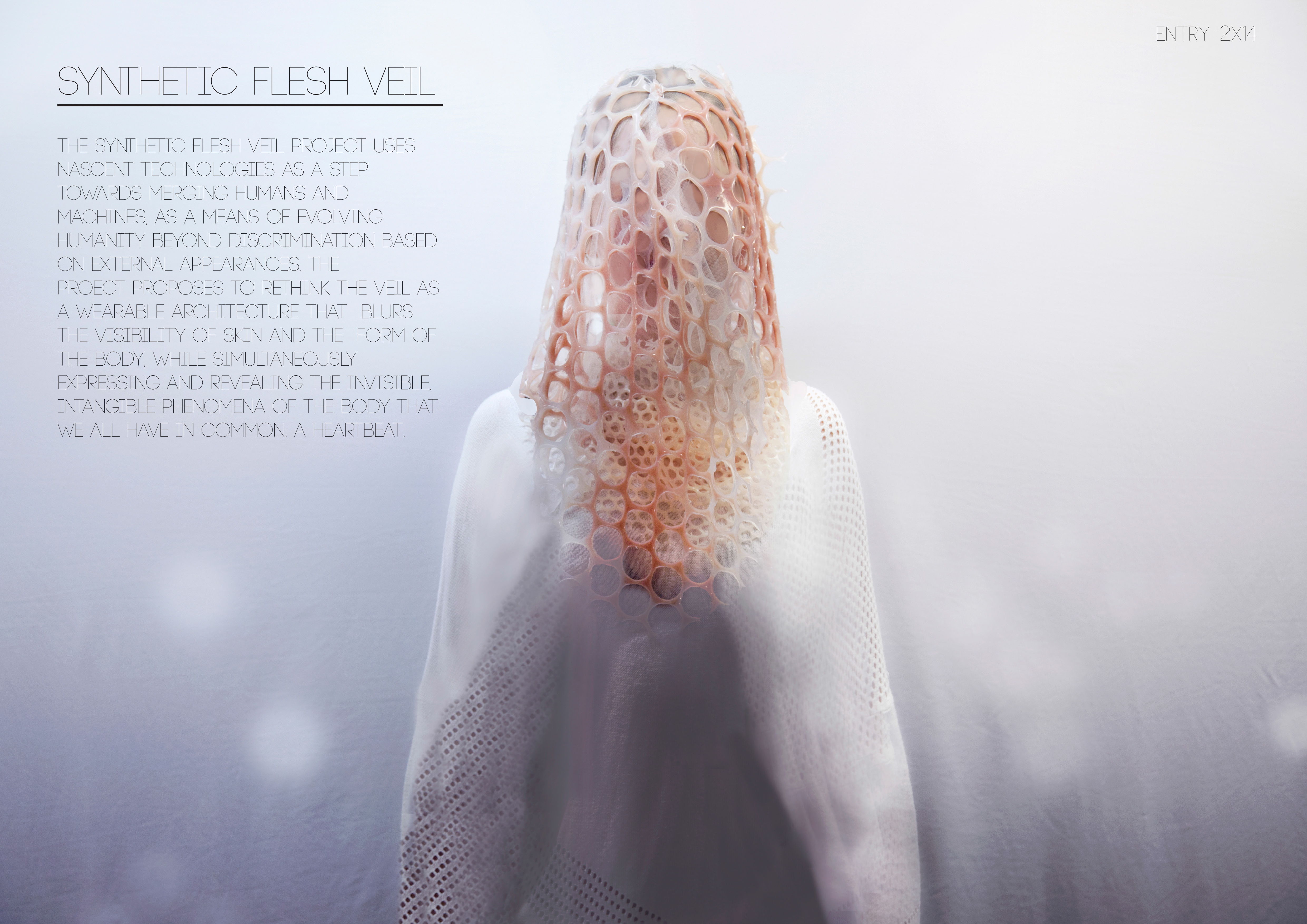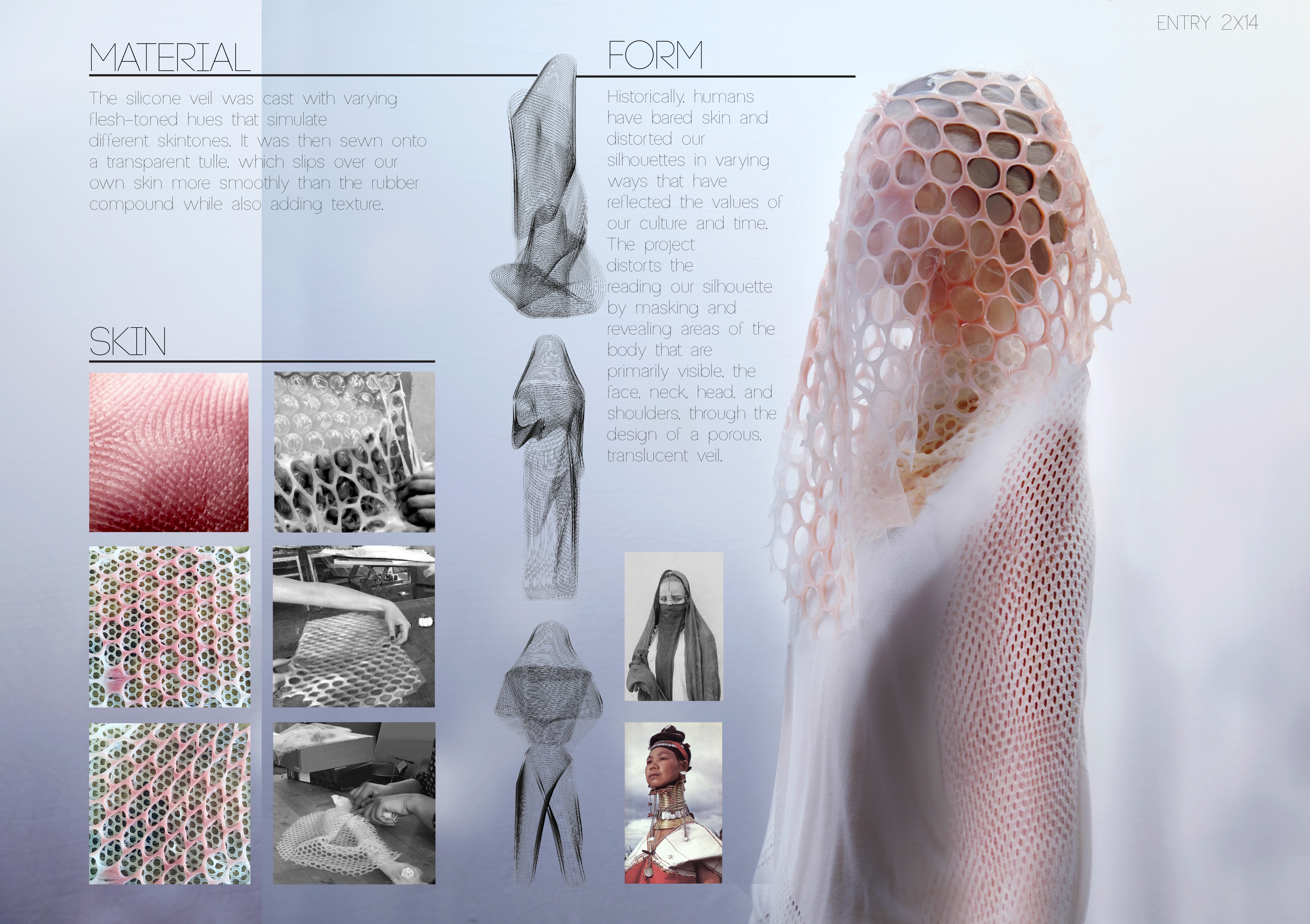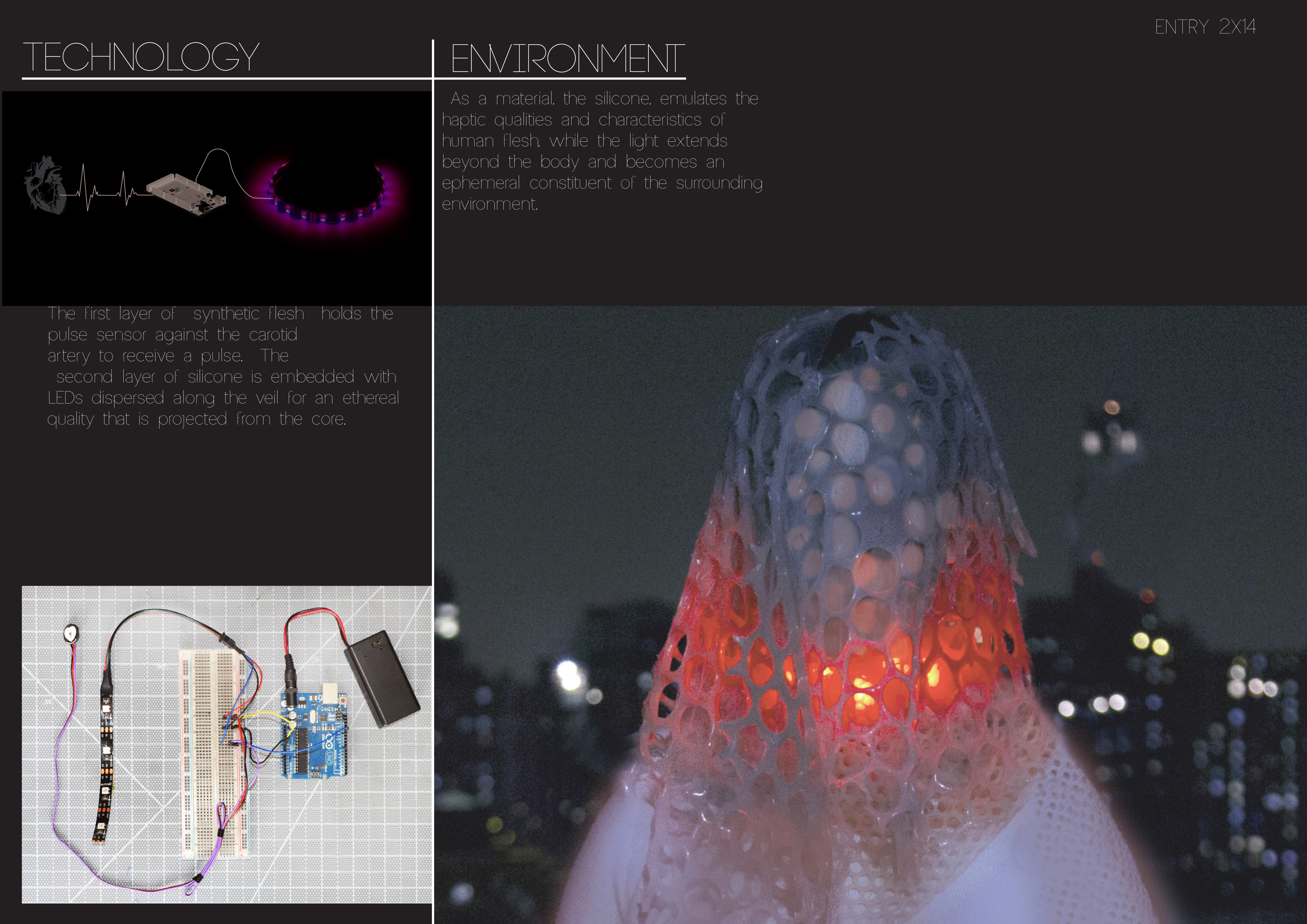RESHAPE17 | programmable skins
Project Description
TEAM
Synthetic Flesh Veil: Blurring the Body’s Exterior and Expressing the Body’s Interior
The Western hemisphere is experiencing a political shift that is impacting global relations. There has been a nationalistic turn inward exemplified by the results of the American presidential elections and the British exit of the European Union. The United States’ current political atmosphere is a disturbing reminder of a past age; propagating a climate of fear based on race, gender, and religion that society should have discarded long ago.
The veil is traditionally a garment worn by females. In the East, the hijab, sheila, and niqab are declarations of religious devotion and modesty. In Western marriages, the bride commonly wears a veil for reasons that at the core are again, religious and modest. Many of the cultures the Western world has “banned” wear the veil because it carries a complicated and sacred meaning. The simplicity of the veil’s physical form is what inspired our wearable technology.
The Synthetic Flesh Veil project uses nascent technologies as a step towards merging humans and machines, as a means of evolving humanity beyond discrimination based on external appearances. The project proposes to rethink the veil as a wearable architecture that blurs the visibility of skin and the form of the body, while simultaneously expressing and revealing the invisible, intangible phenomena of the body that we all have in common: a heartbeat. The Synthetic Flesh Veil, designed to be worn by all humans, distorts the reading our silhouette by masking and revealing areas of the body that are primarily visible, the face, neck, head, and shoulders, through the design of a porous, translucent veil. Combining the use of synthetic materials, biosensors, actuation, and computation, the architecture of the veil utilizes the input of biometrics, the user’s heartbeat, to generate the output of an atmosphere, the light that visualizes the frequency of the cardiac cycle. As a material, the silicone, emulates the haptic qualities and characteristics of human flesh, while the light extends beyond the body and becomes an ephemeral constituent of the surrounding environment.
Historically, humans have bared skin and distorted our silhouettes in varying ways that have reflected the values of our culture and time. The Kayan women of what is now Thailand elongate their necks with brass coils which distort the organic growth of the clavicle and suppress the shoulders. The late Victorian-Era bustle silhouettes distorted the waist and posterior form of British aristocracy with wearable dress forms and corsets. Whether these distortions are cultural or aesthetic, the natural human form is altered to fit a belief of who we are and where we stand in society.
The silicone veil was cast with varying flesh-toned hues that simulate different skin tones. It was then sewn onto a transparent tulle, which slips over our own skin more smoothly than the rubber compound while also adding texture. The first layer of ‘synthetic flesh’ holds the pulse sensor against the carotid artery to receive a pulse. The second layer of silicone is embedded with LEDs dispersed along the veil for an ethereal quality that is projected from the core.
The technology used in our wearable device blurs the human body with that of the machine; our own creation that is capable of exceeding our natural abilities. Through technology, we can evolve in more potent ways than nature allows us. The question of what form this will take continues to inspire conversation, art, and eventually will develop into an answer inspired by the social, political, and technological cultures of our time.
Frank Melendez
Hannah Deegan
Zara Tamton





